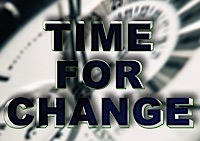 That's right. 2011. These six ideas emerged in 2010 as powerful "innovation invitations" and seem sure to intensify in power and influence. They'll increasingly be a source of, and resource for, innovation differentiation in 2011, if not for your organization, then for the firm you most dread competing against.
That's right. 2011. These six ideas emerged in 2010 as powerful "innovation invitations" and seem sure to intensify in power and influence. They'll increasingly be a source of, and resource for, innovation differentiation in 2011, if not for your organization, then for the firm you most dread competing against.
1. Contestification
Whether Google Demo Slam or Sprint's App Competition, digital media has become an innovation battleground for customers, clients, prospective partners, and young talent. Frito-Lay has already made competition the cornerstone of its Super Bowl advertising, and Toyota, desperate to remind people what a wonderful corporate citizen it can be, invites aspiring innovators to suggest how the firm's technology can be used for good in unexpected ways. Crowdsourced contestification is becoming institutionalized as a way firms can grow their own innovation nations. If you're not running an innovative innovation contest to invite participation and build brand, then you're reacting to your competitor's competition. Will your contest be competitive with their contest? Who's running it? Who's judging it? Who's winning it?

 With the year about to close we're taking a look back at the big successes of 2010.
With the year about to close we're taking a look back at the big successes of 2010.
 Over the last 12 months, Twitter grew by more than
Over the last 12 months, Twitter grew by more than  LinkedIn
LinkedIn Every organization, no matter how small, has one or more people who are quite simply obnoxious, and they drain energy from everyone and can strangle your company. Sometimes they are also intellectually brilliant, or closely related to the boss, so there is no easy way out.
Every organization, no matter how small, has one or more people who are quite simply obnoxious, and they drain energy from everyone and can strangle your company. Sometimes they are also intellectually brilliant, or closely related to the boss, so there is no easy way out. Navigating an airport can be stressful even for experienced travelers so designers Kang Eun-Kyung and Park Ji-Eun thought a compass built into one’s boarding pass would be a great idea.
Navigating an airport can be stressful even for experienced travelers so designers Kang Eun-Kyung and Park Ji-Eun thought a compass built into one’s boarding pass would be a great idea. Apple's iPad
Apple's iPad Even if you jump out of bed every morning excited to go to work, in reality, it could get better. You could be your own boss.
Even if you jump out of bed every morning excited to go to work, in reality, it could get better. You could be your own boss.
 Matt Wilson is co-founder of
Matt Wilson is co-founder of  Income inequality in the U.S. is higher than it's been since the 1920s. That's tough news for most Americans, but for the top 1% who own or control about one-third of the wealth in the country, life could hardly be better.
Income inequality in the U.S. is higher than it's been since the 1920s. That's tough news for most Americans, but for the top 1% who own or control about one-third of the wealth in the country, life could hardly be better. Tech entrepreneur Steve Perlman has his name on more than 100 U.S. patents. He is particularly excited about his latest, but miffed at the same time.
Tech entrepreneur Steve Perlman has his name on more than 100 U.S. patents. He is particularly excited about his latest, but miffed at the same time. Brad Dwyer, 22, launched his entrepreneurial career around a Facebook game he put together while procrastinating instead of studying for a test at Iowa State University in 2008.
Brad Dwyer, 22, launched his entrepreneurial career around a Facebook game he put together while procrastinating instead of studying for a test at Iowa State University in 2008. There’s always talk about a startup’s end game – whether it’s in the form of an acquisition, funding announcement, or eventual flame out. But we rarely hear about the harsh realities that entrepreneurs face. This isn’t meant to be a downbeat and negative article, but actually quite the opposite. By knowing the harsh realities that lie ahead, you can be prepared when they come about. Here are some of the oft unspoken realities I’ve noticed entrepreneurs face regularly.
There’s always talk about a startup’s end game – whether it’s in the form of an acquisition, funding announcement, or eventual flame out. But we rarely hear about the harsh realities that entrepreneurs face. This isn’t meant to be a downbeat and negative article, but actually quite the opposite. By knowing the harsh realities that lie ahead, you can be prepared when they come about. Here are some of the oft unspoken realities I’ve noticed entrepreneurs face regularly. Software is constantly trying to figure out what you mean, and often it guesses wrong. If you were curious about employment at the maker of iPods and typed "turnover at apple" into Google, the top results would be for apple turnover recipes.
Software is constantly trying to figure out what you mean, and often it guesses wrong. If you were curious about employment at the maker of iPods and typed "turnover at apple" into Google, the top results would be for apple turnover recipes. Boston has long led New York in most things venture capital, and is showing no signs of letting up.
Boston has long led New York in most things venture capital, and is showing no signs of letting up. Hot sectors will continue to be well funded even in the equity gap. We are seeing strong demand for deals in digital media, e-commerce, mobile software, cloud, cleantech and digital security and this will continue for some time.
Hot sectors will continue to be well funded even in the equity gap. We are seeing strong demand for deals in digital media, e-commerce, mobile software, cloud, cleantech and digital security and this will continue for some time. Many women are turning to social entrepreneurship because they tend to work more with their hearts, says American serial social entrepreneur and Ashoka Fellow Christina Jordan. Women tend to be very nurturing and their work is an extension of how they see the world.
Many women are turning to social entrepreneurship because they tend to work more with their hearts, says American serial social entrepreneur and Ashoka Fellow Christina Jordan. Women tend to be very nurturing and their work is an extension of how they see the world. Actors want to direct. Directors want to produce. And consultants want to be keynote speakers. And why not? The pay is good. It doesn't take much time. And it's a lot less heavy lifting than most consulting gigs.
Actors want to direct. Directors want to produce. And consultants want to be keynote speakers. And why not? The pay is good. It doesn't take much time. And it's a lot less heavy lifting than most consulting gigs. If you have only a few seconds to communicate the essence of your company, what is the most important message to deliver?
If you have only a few seconds to communicate the essence of your company, what is the most important message to deliver?